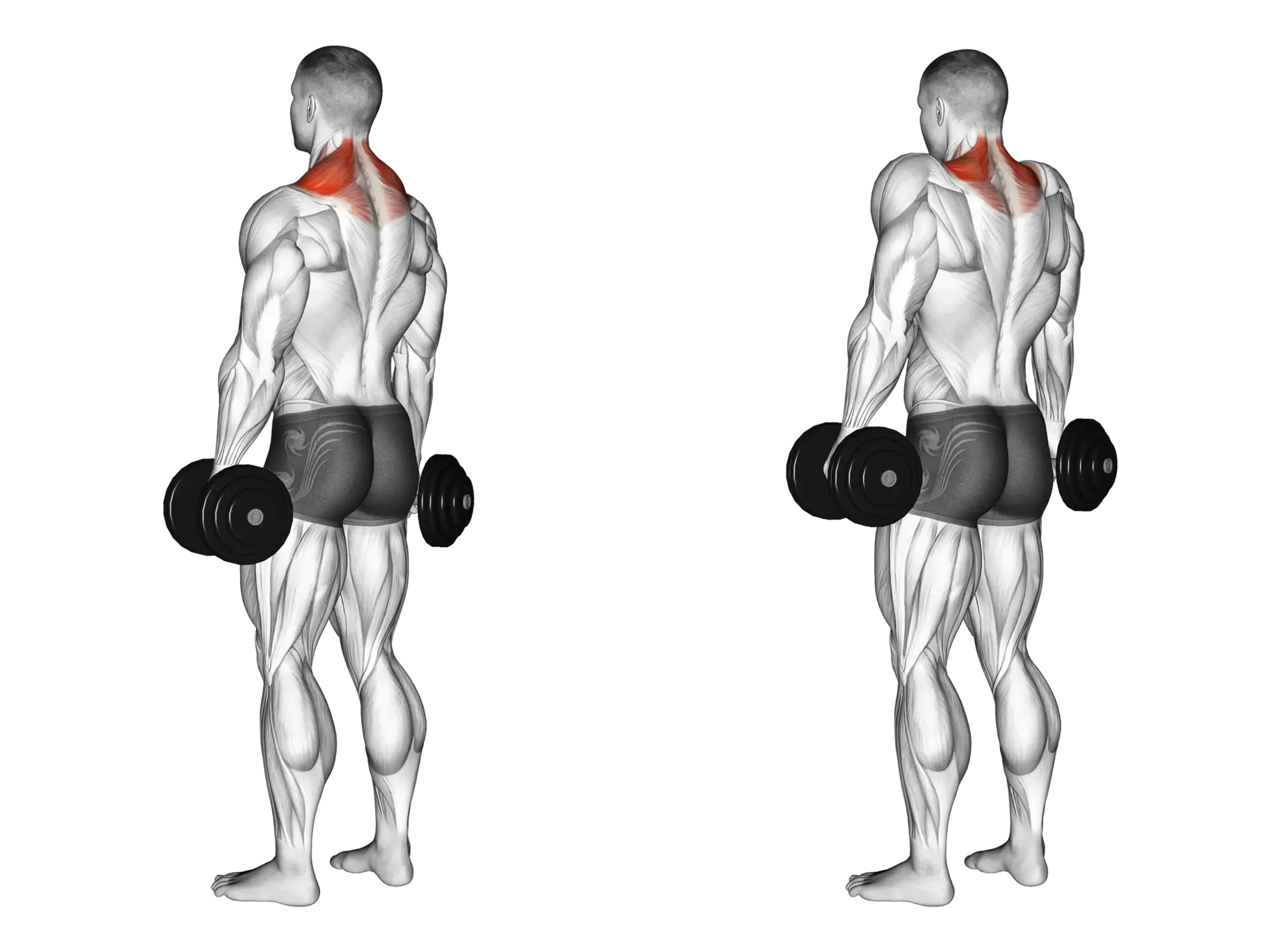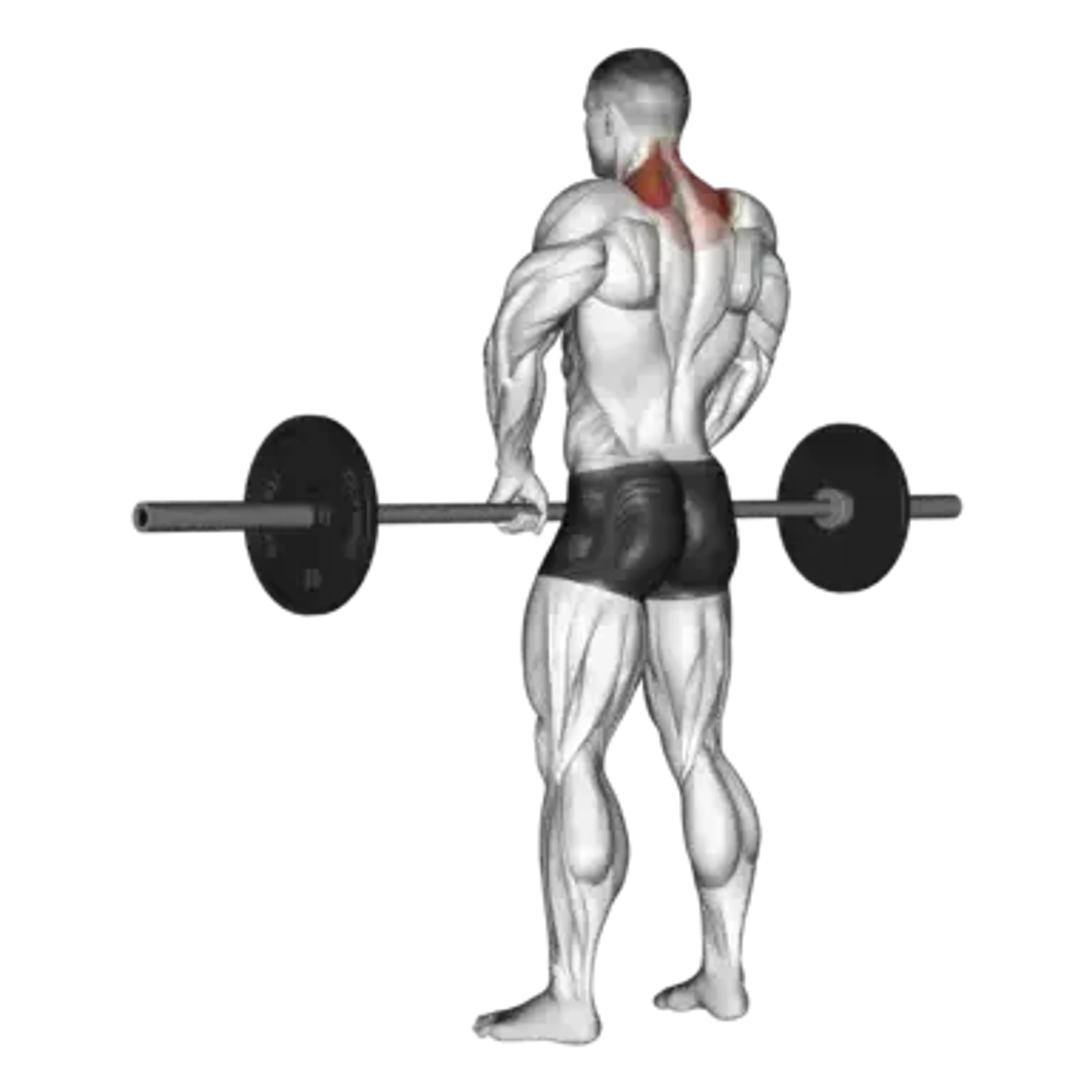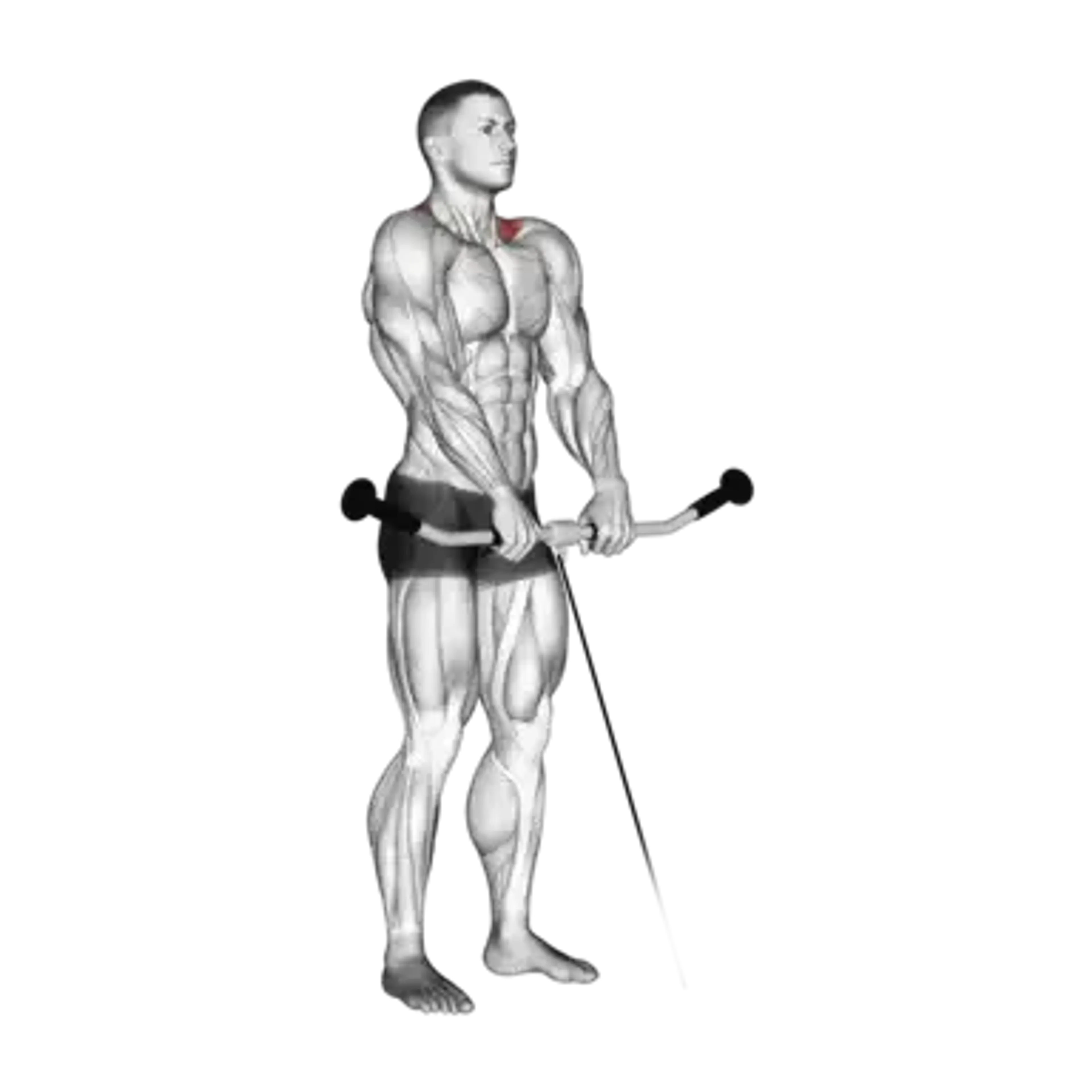Dumbbell Shrug

Overview
- Primary Focus:
- Back.
- Equipment:
- Dumbbell.
- Difficulty:
- Beginner.
General Information
Dumbbell Shrug is an isolation exercise that primarily targets the trapezius muscles and secondarily engages the forearms. It is a beginner-friendly exercise that helps improve upper trap development, posture, and grip strength.
Shrugs are a simple yet effective movement for strengthening the upper traps, which play a crucial role in stabilizing the shoulders and supporting the neck. They are commonly included in strength training and bodybuilding routines to enhance upper body aesthetics and improve overall shoulder stability.
This exercise can be performed with different equipment, including cable shrugs, barbell shrugs, and Smith machine shrugs. Each variation offers slight differences in range of motion and muscle engagement.
Muscles Worked
- Upper Trapezius
- Primary
- Brachioradialis
- Medium
- Erector Spinae
- Medium
- Extensor Carpi Radialis
- Low
- Flexor Carpi Ulnaris
- Low
Instructions
- Stand upright with a dumbbell in each hand, arms fully extended at your sides, and palms facing your body.
- Keep your back straight and core engaged while maintaining a neutral neck position.
- Lift your shoulders straight up as high as possible, squeezing your traps at the top.
- Hold the contraction for a brief pause before slowly lowering your shoulders back to the starting position.
- Repeat for the desired number of repetitions while keeping control over the movement.
Common Mistakes
Injuries
Dumbbell Shrug is a low-risk exercise when performed with proper form, but improper technique or excessive weight can lead to injuries.
One common issue is neck strain, which can occur if the lifter uses jerky movements or tenses the neck too much. Keeping the head in a neutral position and avoiding excessive head movement will help prevent strain.
Another potential risk is shoulder impingement if the lifter rolls the shoulders during the movement. To minimize this risk, always shrug straight up and down without rotating the shoulders.
Lastly, excessive weight can lead to grip fatigue or forearm strain. If grip strength is a limiting factor, using lifting straps can help maintain proper form without compromising the exercise.
Alternative Exercises

Frequently Asked Questions
- Q: Can I perform Dumbbell Shrugs with heavier weights?
Yes, but ensure that you maintain proper form and full range of motion to avoid injury and maximize muscle activation.
- Q: Should I use lifting straps for Dumbbell Shrugs?
If grip fatigue is a limiting factor, lifting straps can help you maintain a strong grip and focus on targeting the trapezius muscles effectively.
Overview
- Primary Focus:
- Back.
- Equipment:
- Dumbbell.
- Difficulty:
- Beginner.


